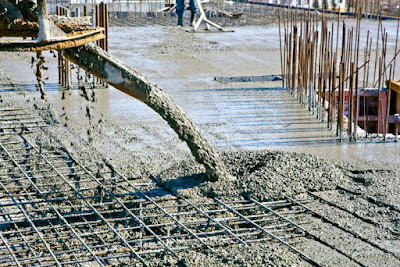SPONSORED
Workability of Concrete

What is the definition of workability? 'workability' is the ability of a fresh (plastic) concrete mix to fill the form/mold properly with the desired work (vibration) and without reducing the concrete's quality. Workability of concrete depends on water content, aggregate (shape and size distribution), cementitious content and age (level of hydration) and can be modified by adding chemical admixtures, like superplasticizer.
Raising the water content or adding chemical admixtures increases concrete workability. Excessive water leads to increased bleeding and/or segregation of aggregates (when the cement and aggregates start to separate), with the resulting concrete having reduced quality. The use of an aggregate blend with an undesirable gradation can result in a very harsh mix design with a very low slump, which cannot readily be made more workable by addition of reasonable amounts of water.
An undesirable gradation can mean using a large aggregate that is too large for the size of the formwork, or which has too few smaller aggregate grades to serve to fill the gaps between the larger grades, or using too little or too much sand for the same reason, or using too little water, or too much cement, or even using jagged crushed stone instead of smoother round aggregate such as pebbles. Any combination of these factors and others may result in a mix which is too harsh, ie, which does not flow or spread out smoothly, is difficult to get into the formwork, and which is difficult to surface finish.
How to determine workability of concrete ?
Workability can be measured by the concrete slump test, a simple measure of the plasticity of a fresh batch of concrete following the ASTM C 143 or EN 12350-2 test standards. Slump is normally measured by filling an "Abrams cone" with a sample from a fresh batch of concrete. The cone is placed with the wide end down onto a level, non-absorptive surface. It is then filled in three layers of equal volume, with each layer being tamped with a steel rod to consolidate the layer.
When the cone is carefully lifted off, the enclosed material slumps a certain amount, owing to gravity. A relatively dry sample slumps very little, having a slump value of one or two inches (25 or 50 mm) out of one foot (305 mm). A relatively wet concrete sample may slump as much as eight inches. Workability can also be measured by the flow table test.
Slump can be increased by addition of chemical admixtures such as plasticizer or superplasticizer without changing the water-cement ratio. Some other admixtures, especially air-entraining admixture, can increase the slump of a mix. High-flow concrete, like self-consolidating concrete, is tested by other flow-measuring methods. One of these methods includes placing the cone on the narrow end and observing how the mix flows through the cone while it is gradually lifted. After mixing, concrete is a fluid and can be pumped to the location where needed.
What is the factors which affect workability of concrete
- Cement content of concrete
- Water content of concrete
- Mix proportions of concrete
- Size of aggregates
- Shape of aggregates
- Grading of aggregates
- Surface texture of aggregates
- Use of admixtures in concrete
- Use of supplementary cementitious materials


